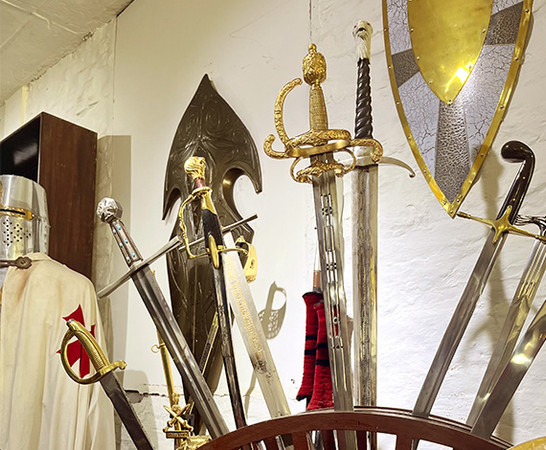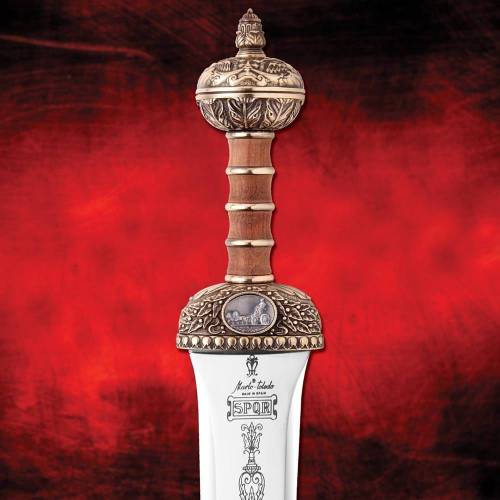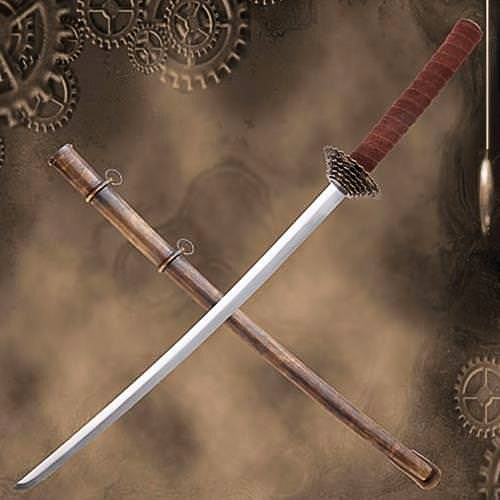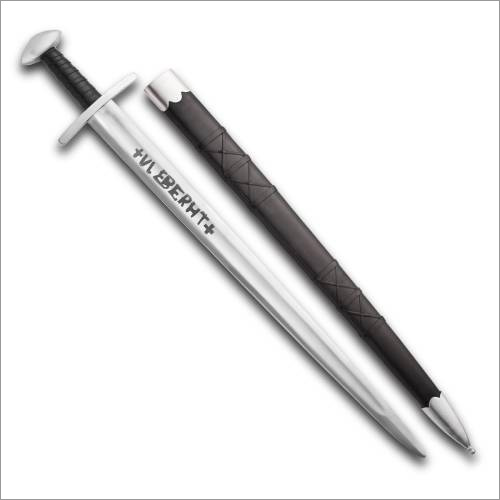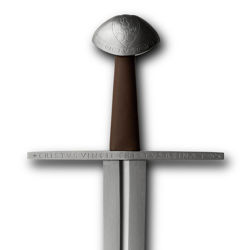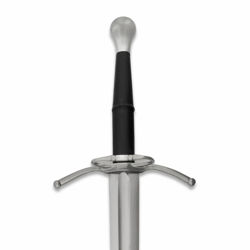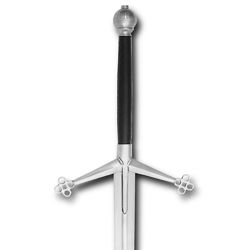Top 15 Deadly Swords in the History
Posted by MRL on Jun 18th 2019
It’s no secret that since Man had the ability to shape stone and metal starting thousands of years ago, they’ve also been slashing, stabbing, hitting, and basically wreaking havoc on each other ever since. When did the first knife fight break out? When the second blade was created. Over the centuries, the longer version, swords have become the best option for the battlefield and many have a fearsome reputation.
It wasn’t unusual for a design to be created or a current tool altered to maximize the destruction against defenses of the day like shield or armor. The effectiveness of a sword changed with the times and was not immune to fashion cues. Different parts of the world had their own take on what was best for the tactics used in their respective countries. But be assured the purpose was the same - to inflict as much damage as possible on your foe.
So, on that cheery note here are some of history’s most fearsome swords and cutting blades. Your list may differ, but we can all agree that the edged weapons of history have made their mark:
Koa Sword, Pacific
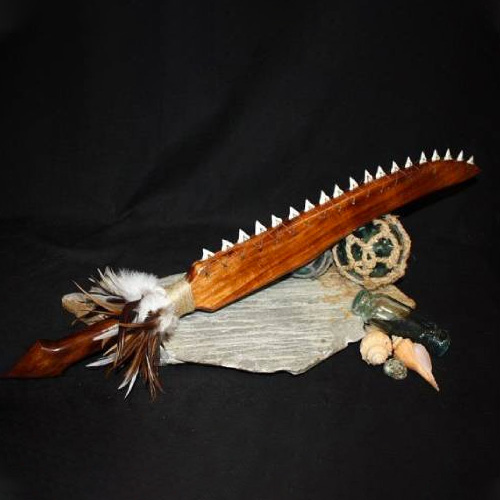
The Koa was created by Polynesians and Hawaiians to utilize the natural resources available to them AND take full advantage of the terrifying reputation of the ocean inhabitants which fit their mythology. What better way to do that then create a sword made of sharks teeth? You weren’t just fighting a shark tooth wielding warrior, but the spirit of the predator the teeth came from, a double whammy! Honestly, this could be one of our favorites, very imposing and wicked-looking even though it may not have been all that practical.
The Roman Gladius, most of the known world
This makes our list for sheer longevity. The gladius cut out an empire and policed it for 800 years. According to some historians, the design didn’t even originate with Rome. They saw the effectiveness of this simple short sword used by Celtic mercenaries who fought for Hannibal and adopted it as their own. Though it could cut off an enemy’s limbs if it was sharp enough in close quarters combat, the Roman gladius was used a great deal as a thrusting weapon. Medical care, not being what it is today, oftentimes could not heal a serious thrust from the sharp, wide blade.
The Estoc sword, Medieval Europe
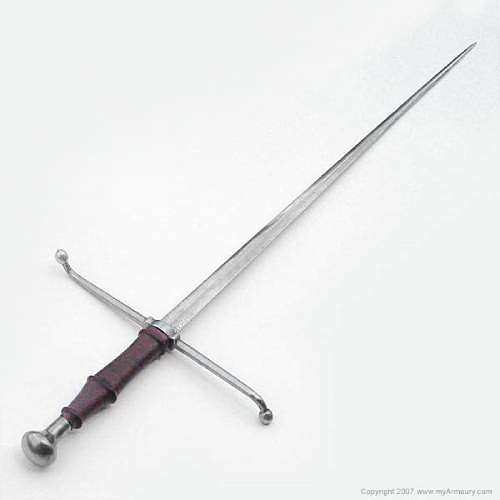
Estoc swords were long, needle-like blades with a very focused purpose- to get through chain mail and plate armor with deadly efficiency. Often two-handed they could puncture and separate any armor with a strong thrust. You could grip the weapon solidly and put all your weight behind it for maximum effect. If it didn’t kill on the first thrust, you could count on it to maim and disable. So effective were these blades that they were adapted for and very popular in hunting. Far riskier than using other means to hunt bears, boars, and deer, it allowed the hunter to get up-close to a wild beast and kill it with a single thrust proving his skill and bravery.
The Katana, Japan
More than a feared weapon in movies, books, and video games it was the choice of the Samurai and was a symbol of social class. From 1100 onward dueling and close-quarters combat ruled the day. The slightest delay in drawing your weapon might prove fatal. So a skilled samurai would practice for hundreds of hours to both draws it and attack an opponent in a single move. The Samurai had their reign cut short however by a government ban that sought to limit their power and influence and in 1876 a law was passed that allowed only former samurai lords and police officers to wear the weapon in public places. Knowing the reputation of this famous weapon, the katana continued to be worn and wielded by officers in Japan’s Imperial Army well into WWII. Far from being merely an ornament, it was again used in battle. Above all, the sword was respected and revered due to the sharpness a master could put on the blade. Enough to cut a silk scarf if simply dropped onto the edge! Of course, that could be why it was banned in Japan after the war.
The Kilij, Turkey
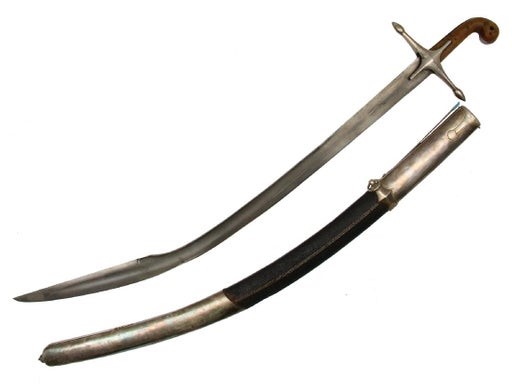
The now-iconic look was originally developed by Turkish swordsmiths to maximize power in the slashing stroke. It literally means ‘sword’ in Turkish. It worked so well that much of Central Asia adopted it and even parts of Eastern Europe. The secret lay in the double-edged tip. This flared out at the very top, helping make the end of the weapon stronger and more powerful adding to its momentum. A skilled warrior could use a kilij to cut through human bone in a single slash. Turkish warriors liked the menacing look of the sword as well, thinking it made them look both more fearsome and more regal than their enemies. Recently, we have launched an Ottoman Kilij Sword which is a must have for a Historical Collector.
The Ulfberht Swords, Viking
Of all the weapons made by Viking smiths, those crafted by Ulfberht were the most coveted. They were so strong that a warrior wielding one was feared to be a demi-god! What makes these swords so interesting is how they were forged. The weapons were made by heating iron to a temperature of around 3,000 degrees Fahrenheit. Here’s the kicker, that technology didn’t become commonplace until the Industrial Revolution, about 800 years later. What? The ‘Crucible’ steel they produced meant that they were flexible and very strong- almost unbreakable. What’s more, they would have been lightweight and stayed sharp longer making some warriors seem superhuman. Instead of being passed down, they were reverently buried with their deceased owners, giving them elevated status in the afterlife. You didn’t stop being a warrior in Valhalla!
The Khopesh, Egypt
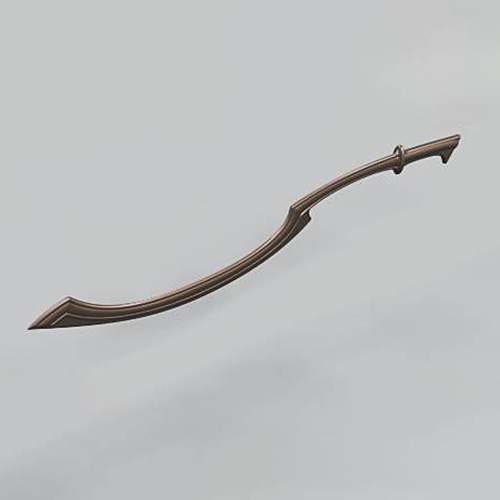
Thousands of years ago the khopesh was considered relatively lightweight and easy to wield. The curved blade was only sharpened on the outside and would have been used to cut, slash and bludgeon an enemy. It was still thick enough and weighed enough to literally beat you to death like a club. At the same time, the hooked shape would have allowed a soldier to disarm his opponent and then attack him in a single move. Many pharaohs were buried with his khopesh by his side and this type of sword continued to be shown in hieroglyphics for a few thousand years, even after use had ceased in battle showing its importance.
The Kukri, India
Absolutely devastating in the hands of a Gurkha soldier, they could lop the head off an opponent in one swing. A soldier with the proper training could take out multiple opponents with it in short order. It was said some soldiers gave up fighting all together when they saw this opposing curved blade appear in the elite warrior’s hands. A sword version is issued to every regiment for their sacrificial rite performed before going into battle to gain their god's favor. And the trident indent near the ricasso is thought to represent Shiva’s trident- the god of destruction.
The Kamplian, Filipino

Its unique double-tipped blade made it a fearsome, deadly weapon. Its tip would have been unlike anything Europeans and other enemies had ever seen before. The tip splits, with the main tip and a protruding mini spike which resembled a fearsome creature’s open maw. It was a highly-effective, devastating stabbing weapon during its day. Any enemy soldier pierced by the double-tipped end would have almost certainly died in agony.
The Jian, China
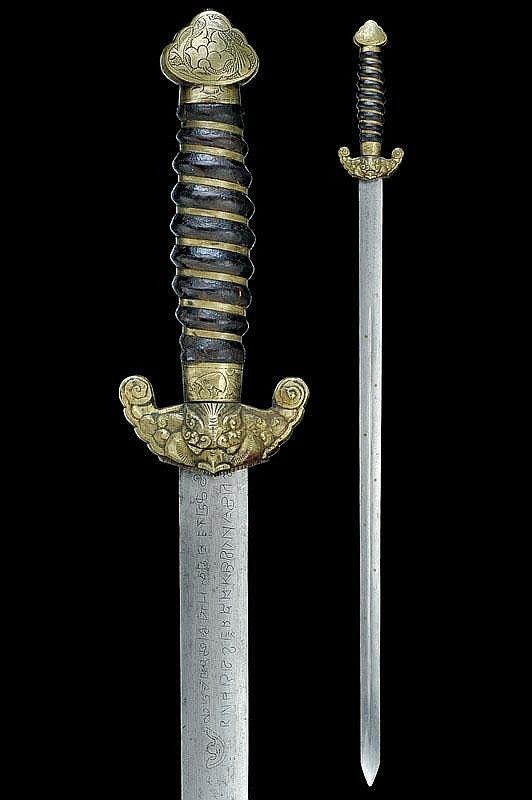
This was thought to be a more gentlemanly weapon on the battlefield as it could be used for cutting or thrusting as the need arose. Basically, the right cut or stroke for the job making it more humane in a way. In the legends of Taoist Immortals, several warriors have one as their main weapon. While it may not have been as powerful or as strong as other historical swords, it was more versatile than most. Not only could it be used for thrusting and stabbing, but it was also ideal for cutting. It’s double edge and simple looks fooled many opponents and they paid the ultimate price underestimating the many techniques that could be employed with it.
A Zweihander sword, Europe
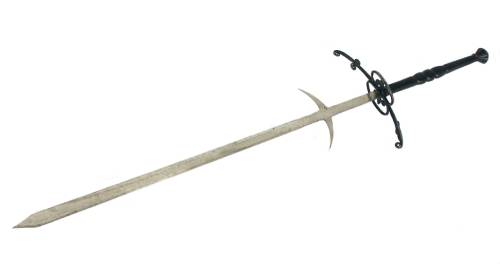
This was literally a massive, two-handed sword that had the weight to go with it. It was a very brave and strong soldier that could wield it. But those that did could take off heads with a single blow and mercenaries that could use this imposing sword could charge more for their services. Capitalism- you’ve got to love it. The swords grew to a massive 6 feet in length and could weigh up to 15 lbs. which made them imposing being swung or standing still. Size mattered, this style of fighting gave a soldier or mercenary the advantage of reach and power which was especially effective when breaking up rows of pikemen or formed lines of soldiers.
The Katzbalger, Germany
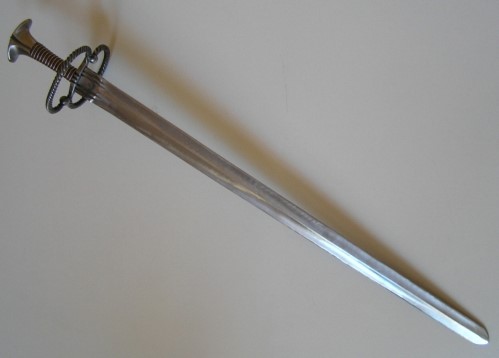
During the Renaissance groups of pikemen and archers would offer their fighting skills to the highest bidder, which was great until things got close, and then they pulled out their short swords. The ‘cat gutter’ as it was crudely named could have come from the fact that some soldiers covered their blades in scabbards made from cat skin or that they had to fight like feral, cornered wild cats as a last-ditch effort. Either way, the name alone gets a mention on our list. In many cases, the soldiers would use the sword to slash at their enemies’ legs, chopping them down and then finishing them off.
The Urumi, Sri Lanka
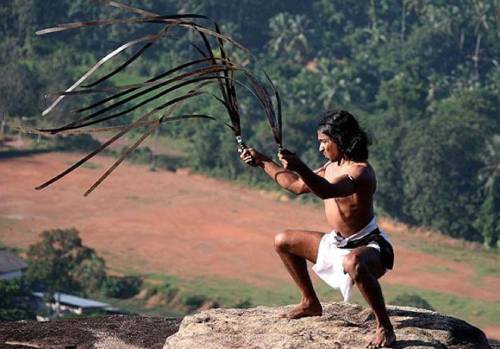
A cross between a sword and a whip, need we say more? It took years to get right and learn to use, but it could inflict nasty wounds on several opponents at once. This may be the only one on our list that altered the sword as a weapon of mass destruction. It’s composed of many flexible metal blades (sometimes as many as 30) attached to a single handle. The blades are wrapped around the waist like a belt when not in use. Once out and ready for action it was handled more like a whip. (How things could have been different for Indiana Jones!) Without good whip skills the user could just as easily hurt or kill himself. There was arguably no better sword-like weapon for taking on multiple opponents, especially if one was held in each hand.
The Khanda, India

This sword was used by the warriors of the Indian subcontinent and is now a spiritual object as well as a weapon of war. From the 1700’s on, this double edge sword came to be fitted with hand and finger guards and even basket hilts which we believe influenced all European weapons with like traits. This is why we’ve put it so high on our list. The khanda was a symbol of bravery and sacrifice for Sikhs and remains revered after centuries of use in battle and ceremony emphasizing its spiritual importance.
Winner- The Miao Dao, China
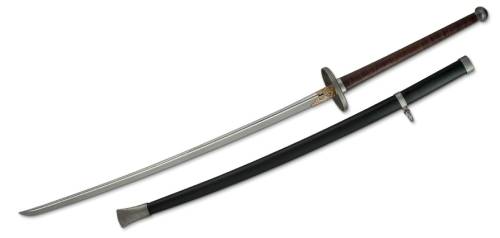
Incredibly, and against all odds, this sword was so popular with Chinese warriors that some even took the sword into battle during WWII! While it may have been no match for modern munitions of the day, the sword is deadly close-up, as Japanese soldiers learned at a high cost. The name means ‘sprout saber’ due to the way it resembles a sprouting plant, it’s similar to a military saber or cutlass crossed with a katana or scimitar- a rare mix of sword types rolled into one sword that makes almost any style of fighting possible. The longer hilt meant that it could be swung with two hands, though it was light enough for a soldier to attack with one, making it one of the most versatile swords ever devised. And in addition to being used in the heat of battle, it was also used to execute captured enemy soldiers. Like we said, versatile.
Honorable mention the Flame Sword, Germany
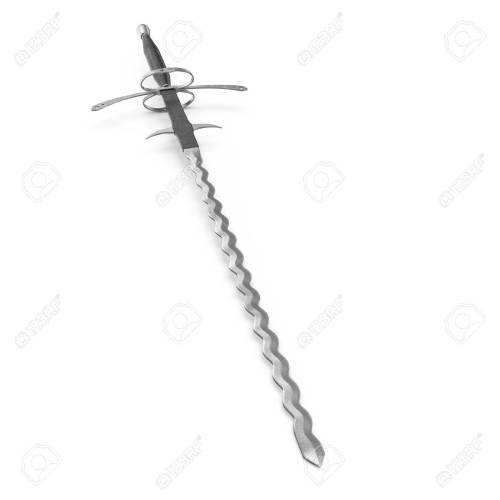
The flammard was a highly-effective weapon and looked great. It was thought a wavy blade could inflict more damage when being pulled from the body, not unlike a saw blade with sharp teeth, while the undulations could slow an opponent’s blade all the while throwing off their technique. Although much of this was a myth, it is an attractive and unique weapon.
If you need a sword that will see you through battle after battle, pick one from our range of functional swords. For self-defense, nothing levels the playing field like a good sword cane and if you are looking for something to practice full combat safely while preserving the precious steel for the real battle to come, we have practice swords for you.
Related blog: Top 10 Popular Battle-Ready Movie Swords of All Time (in our opinion)



